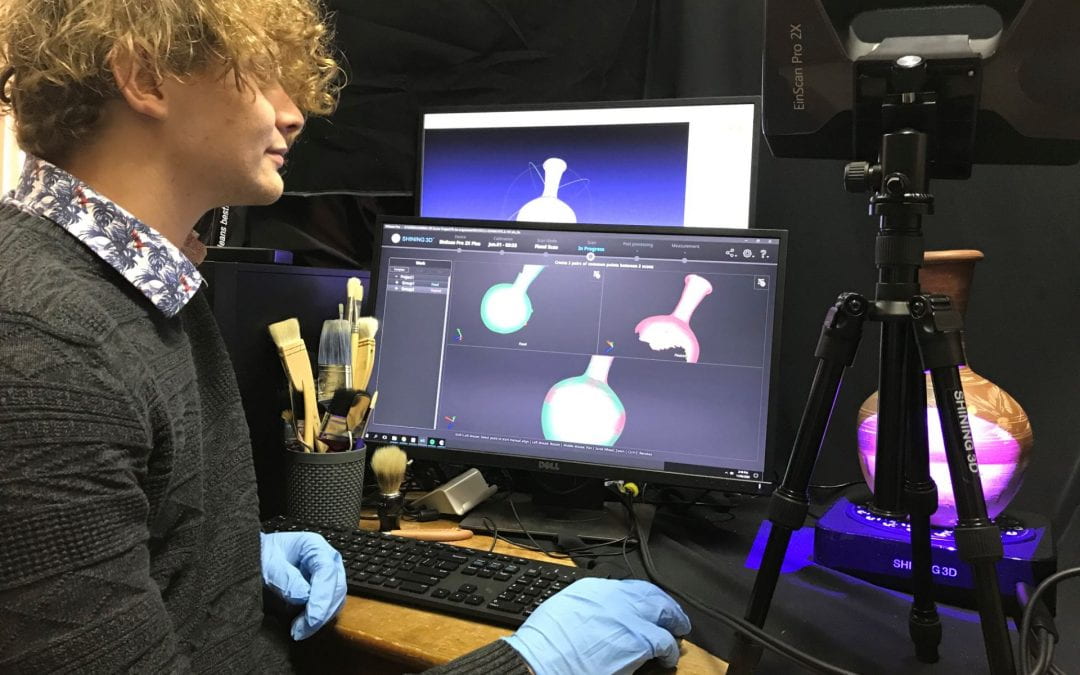As a UNE history student, Jackson Shoobert thought he was pretty familiar with the objects and cabinets in UNE’s Museum of Antiquities. But, catapulted into the world of 3D scanning, he’s on a whole new multidimensional journey into the past – or perhaps, the future.
“I was asked by the curator, Dr Bronwyn Hopwood, if I’d like to be part of a project with the museum, and I jumped at the opportunity,” he says.
“I had always liked the numismatics display in the museum – all the different eras represented side by side in coinage was always fascinating to me. I’ve also come to really appreciate the Cypriot collection – it’s absolutely huge!”
Still, he wasn’t quite prepared for what was in store – helping prepare detailed 3D scans of the 3,000 museum objects, so they could be viewed and studied remotely using an online learning platform.
“I had no prior experience working with 3D scanning,” Jackson admits. “The closest skill I could boast was an amateur knowledge of 2D image manipulation and a basic awareness of how 3D models work.
“There was a lot of trial and error. I look back at the work Bronwyn and I were producing in those days and can’t help but laugh, we really had to figure out a lot simply by making mistakes.”
It’s painstaking work that has to take into account the material, shape and shadows of each artefact.
“It can be tedious and frustrating occasionally, but when everything works well it’s also extremely rewarding,” he says.
And, it’s a pretty unique way to experience the Museum of Antiquities’ collections.
“Not many people really get to be so intimate with the Museum of Antiquities’ collections. The time I get to spend with the 3D models really allows me to examine parts of the collection that you could never truly appreciate behind the display pane. The displays from the Americas have become some of my favourites – they look amazing in the scans!”
As well as improving accessibility to the artefacts, the online platform allows people to be more hands-on with the models by manipulating them and being able to accurately measure them, opening up new opportunities for teaching and learning.
“Whilst working on the project and becoming more familiar with digitising projects around the world, it has really amazed me just how quickly the field is growing and becoming a bigger part of the museum experience.
“I’m looking forward to helping UNE join this community and to be able to show the hidden gems we have here.”
View the collections: https://antiquities.une.pedestal3d.com/
Images:
(1), (2) Jackson Shoobert prepares 3D images of ancient artefacts
(3) MA2005.5.1 Double-Chambered Whistling Cat – Structured Light Surface Scan. Machu Picchu Vicu Culture, Peru. 200 BC-AD 200.
(4) MA1960.2.2 Roman Terracotta Oil Lamp – Structured Light Surface Scan. Roman Italy. Undated.
(5) MA1977.3.1 Filter Base of Water Cooler – Structured Light Surfac Scan. Fustat (old Cairo). Ayyubid Period.



Recent Comments